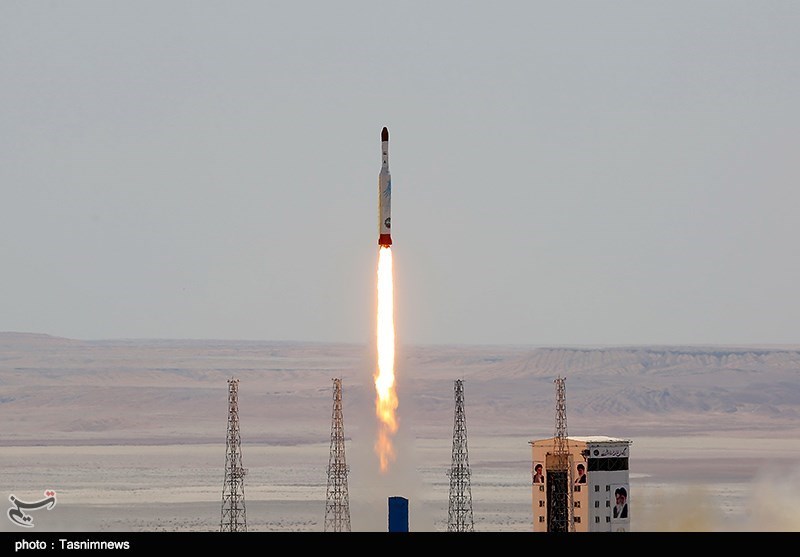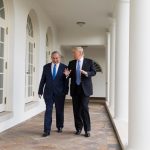by Michael Elleman
Iran attempted and failed to lift the Payam-e Amirkabir satellite into orbit using a Simorgh rocket on 15 January. Israel’s Prime Minister Benjamin Netanyahu responded to the news by stating that the purportedly ‘innocent satellite’ launched by Iran was in reality ‘the first stage of an intercontinental missile’, which he claims is in violation of international agreements. Not to be outdone, US Secretary of State Mike Pompeo tweeted, ‘In defiance of the international community & UNSCR 2231, #Iran’s regime fired off a space launch vehicle today. The launch yet again shows that Iran is pursuing enhanced missile capabilities that threaten Europe and the Middle East.’
Iran’s failed launch was neither a violation of United Nations Security Council Resolution 2231, nor was it an intercontinental ballistic missile (ICBM) being tested under the guise of a satellite launch.
Iran’s Space Program
Iran’s interest in space research dates back to 1967, long before the Islamic Revolution of 1979. Active research and development aimed at creating satellite-launch vehicles (SLVs) did not begin until around 2000, and Iran’s first attempt at orbiting a small satellite took place in February 2008, with the two-stage Safir SLV. The launch failed, although Iran finally succeeded on its third attempt a year later.
Iran unveiled a mock-up of the Simorgh in 2010. After a series of delays, the first two launches of the Simorgh took place in April 2016 and again in July 2017, with each ending in disappointment. The third attempt on January 15 also failed. Iran’s Minister of Information and Communications Technology, Mohammad Javad Azari Jahromi, indicated that the first and second stages of the space mission were completed successfully, but that the Simorgh‘s third stage failed to accelerate the Payam satellite to orbital speed.
The Simorgh is a three-stage rocket. Its first stage weighs about 75 tonnes, and is powered by a cluster of four Nodong engines and four small steering engines. The second stage relies on four low-thrust engines originally designed for steering the now-obsolete Soviet submarine-launched missile, known as the R-7 or SS-N-6. The third stage consists of a newly designed, Iranian-produced solid-fuel motor weighing less than a tonne. Apparently, this new motor either failed to separate from the second stage and ignite, or it malfunctioned during operation.
Differences between SLVs and Long-Range Ballistic Missiles
The technologies and components employed by satellite launchers, including the Simorgh, and long-range ballistic missiles are similar. Both use powerful rocket engines, high-strength and lightweight airframes, inertial navigation and guidance units, stage- and payload-separation mechanisms, as well as tracking and telemetry systems to support development and operations. Despite these similarities, accusations that Iran’s use of Simorgh to launch satellites is a cover for ICBM development are misguided.
For example, ballistic-missile carry payloads must survive the rigors of re-entry into the Earth’s atmosphere, requiring development of robust thermal- and mechanical-protection systems. SLVs, including the Simorgh, carry payloads that operate in space, and that are not subjected to challenging re-entry dynamics.
Satellite-launch vehicles and long-range ballistic missiles employ distinctly different trajectories to fulfill their respective missions. SLVs perform well when using low-thrust, long-action time engines, whereas ICBMs must climb to higher altitudes to maximize achievable range. This requires upper stages equipped with high-thrust engines. The Simorgh’s configuration, featuring low-thrust engines in the second and third stages, is consistent with a rocket optimized for satellite launches, not ballistic missile trajectories.
Perhaps the least obvious difference between the two systems lies in their operational requirements. Prior to lift-off, SLVs including the Simorgh are prepared over a period of many days, if not weeks. Components and subsystems can be checked and rechecked. If a technical glitch emerges during the countdown, the launch can be delayed until it is fixed. Similarly, SLV launches can wait for ideal weather conditions. Whereas ballistic missiles, like any weapons system, must be poised to operate without delay and under all conditions. A missile’s operational demands impose a more rigorous validation scheme that includes an extensive test-flight program consisting of at least a dozen launches before being declared combat ready.
Finally, the Simorgh, like other SLVs, can be prepared for launch over an extended period, at a fixed and known location without fear of being interdicted by an adversary. Ballistic missiles, on the other hand, are expected to be targeted by foes so must rely on mobility, concealment and prompt preparations to avoid pre-launch destruction. Reducing the size and weight of an SLV is not a critical design parameter, as they need not be deployed on mobile-launch platforms. The Simorgh’s first stage, which is more than 17m long, 2.4m wide and weighs more than 75 tonnes, is ill-suited for mobile deployment as required by most ICBMs.
Satellite-launch activities do offer Iran’s engineers an opportunity to accumulate experience and generate data that could aid efforts to develop long-range ballistic missiles. However, the results have limited application to ballistic missiles. Only a fraction of the overall missile development challenges can be addressed when operating an SLV. Other criteria – most notably re-entry technologies, operational requirements and launch-crew training – cannot be adequately addressed while operating the Simorgh.
If Iran seeks to transform the Simorgh into a long-range missile, engineers would still need to flight test it as a ballistic missile a dozen or more times before it could be deemed a dependable, operationally viable and accurate weapon. For these reasons and others, the trend of other countries has been to convert ballistic missiles into satellite launchers, not the reverse. Further, satellite-launch activities have not decisively contributed to the development of a long-range missile. The Simorgh is no exception.
Purpose over Capability
Adopted in July 2015, UNCSCR 2231 endorses the controversial Joint Comprehensive Plan of Action (JCPOA), or nuclear deal with Iran. Unlike the JCPOA, Resolution 2231 addresses Iran’s missiles and their potential role in delivering nuclear weapons to distant targets. The resolution states: ‘Iran is called upon not to undertake any activity related to ballistic missiles designed to be capable of delivering nuclear weapons.’
As argued in a new IISS book, Uncertain Future: The JCPOA and Iran’s nuclear and missiles programmes, the resolution proscribes Iranian missiles based on their intended purpose – those designed to carry nuclear weapons – rather than their inherent capability.
Some of Iran’s current arsenal of ballistic missiles are indeed designed for nuclear delivery. The design heritage, performance characteristics, including throw-weight capacity, and the size of the payload compartments (i.e. re-entry vehicle or nosecone) of the Shahab-3 and Khorramshahr medium-range missiles exhibit clear signs of nuclear intent.
Other missiles, such as the Shahab-1 and -2, are based on the export versions of the Soviet-era Scud-B (R-17E) and Scud-C (R-17M) respectively. The export versions of the Scud missiles were specifically designed for conventional warheads. The nuclear version of the Scud-B (R-17) has measurably different external dimensions than the export versions. The Scud-based missiles imported by Iran from North Korea are clones of the R-17E and, therefore, are presumed to be designed for non-nuclear use.
Finally, Iran’s Qiam, Sajjil and variants of the Ghadr missiles are all equipped with a tri-conic nosecone that is too small to house Iran’s prospective nuclear-implosion device described in documents captured and presented by Israel, rendering them designed to be non-nuclear capable.
The Simorgh, as discussed above, is designed and optimized for use as an SLV, not as a ballistic missile, let alone one for delivering nuclear weapons. It could certainly be transformed to perform as a ballistic missile, but this would require a new design and configuration, and then it would have to be subjected to a flight-trial program to validate its military utility. Clearly, the Simorgh SLV does not violate the word or intent of UNSCR 2231.
Saving Diplomatic Capital
While they do not violate UN resolutions, continued satellite launches using the Simorgh do pose some risks. Successive launches provide training and experience to Iran’s missile experts that could contribute to a future ICBM development effort. The potential contributions, however, will not significantly shorten the time or reduce the expenses needed to create a militarily viable long-range missile. The US and its allies should prioritize their non-proliferation policies to address Iranian activities that could most directly lead to the creation of long-range missiles.
To this end, the Khorramshahr missile – which uses propellants that are more energetic than those employed by Scud and Nodong systems – is of much greater concern. The higher energy propellant combination allows engineers to reduce significantly missile size and mass, which in turn could form a basis for a road-mobile, nuclear-capable ICBM.
Similarly, if Iran restarts development of the two-stage, solid-fuel Sajjil missile, which has not been flight tested in eight years, and begins employing large, solid-fuel boosters on its SLVs or missiles, the international community would be right to protest, as such developments could be exploited to fashion a nuclear-tipped ICBM.
In short, diplomatic capital should not be diluted by protesting Iran’s use of the Simorgh SLV, but should instead focus on Iranian actions that pose the greatest risk to international security.
Michael Elleman is a senior fellow for missile defense at the International Institute for Strategic Studies, where this article originally appeared.






“Satellite-launch activities do offer Iran’s engineers an opportunity to accumulate experience and generate data that could aid efforts to develop long-range ballistic missiles.”
Why do the Ayatollahs need that when people are hungry?
@Ali Mostofi, wrong! Launching a satellite into orbit and launching of ICBM are at two different technology platform! Even if the rumor is true and Iran is trying to find ways to achieve capability of launching ICBM, what’s wrong with that? Are you anti-everything?
Iran did fail once by not taking its nuclear program all the way to the end point prior to any negotiation! The mistake should never be repeated again in any other technology development!
Don’t you ever forget how Kim Jon Un is being treated with respect now!
How would you know if people are starving in Iran Mostofi, you haven’t been there for decades. Recently, you were delighted that Trump’s sanctions were stopping Iran from importing medicine.
To answer your question, Iran needs to make their own ballistic missiles because it is an ecomic means to deter military operations against their country. If they didn’t have them then they would become the next Yemen. The U.S. would blockade their country physically and bomb their infrastructure to ‘punish them’ for not complying to our wishes and this would cause starvation. At the very least, no sovereign country should put their fate in the hands of a foreign power that has demonstrated such careless use of force.